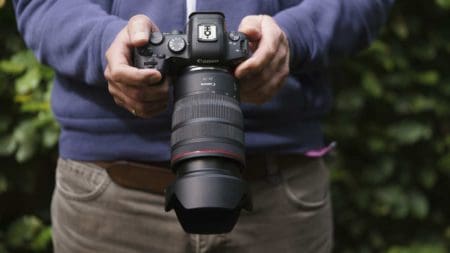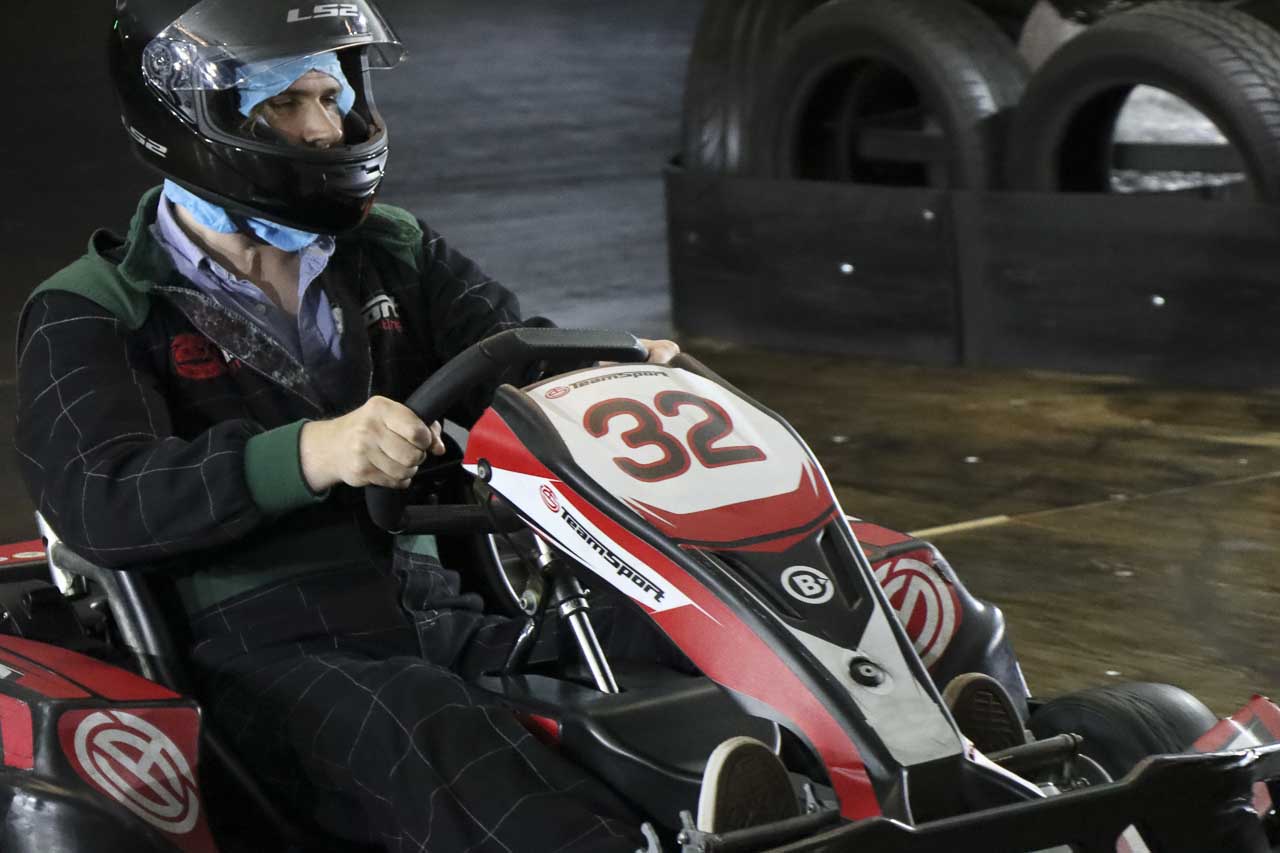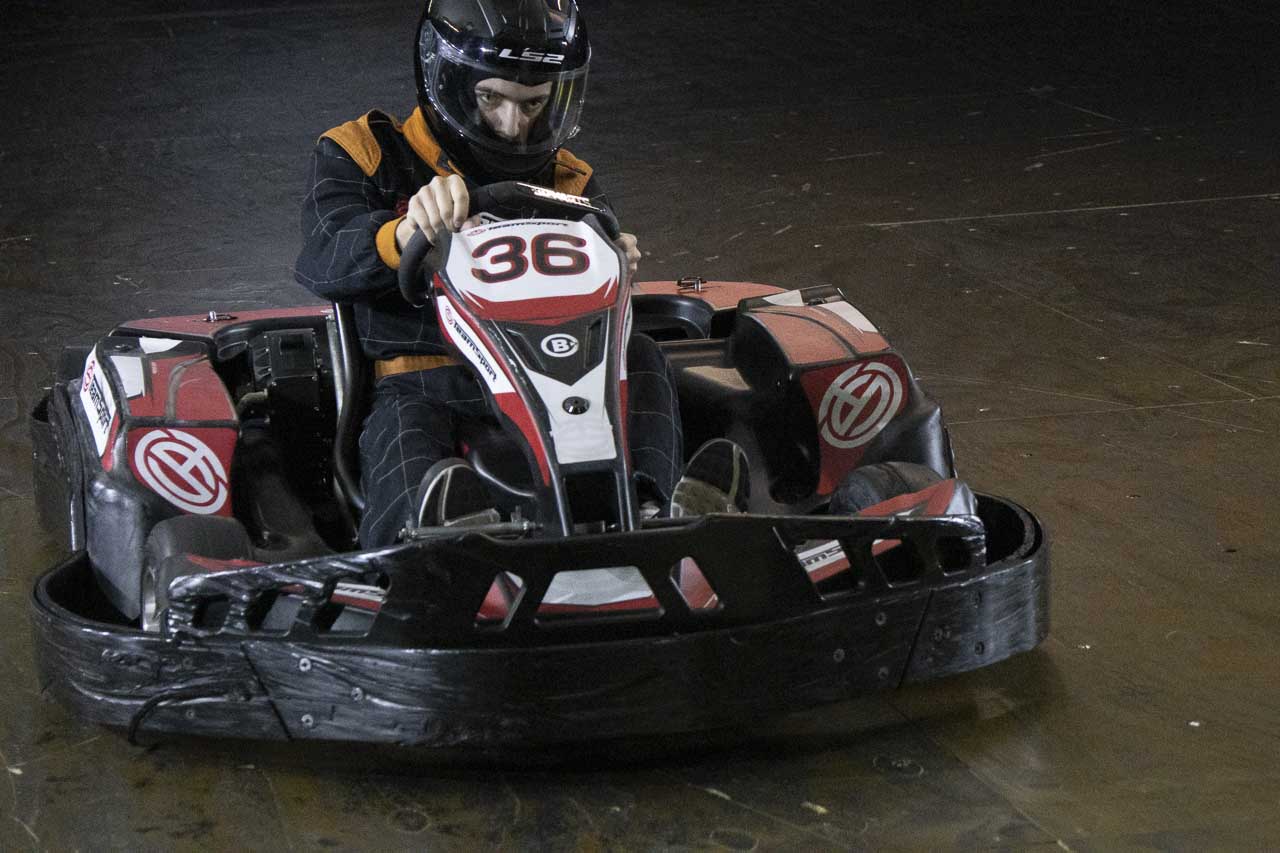Snap Verdict
Although Canon has opted to use the Mark II badge rather than EOS M7, the M6 Mark II makes some significant steps up from the EOS M6. In most respects, I’m very impressed by what the Canon EOS M6 Mark II can do. The AF system copes incredibly well with low light and it’s fast enough to use with speeding subjects. The Canon M6 II also has the same 32.5Mp APS-C format sensor and Digic 8 processing engine as the Canon EOS 90D, and in most situations, its image quality is very good. However, noise is visible in ISO 400 images at 100% and the shadows of some Jpegs can be a bit mushy.
That said, I like the EOS M6 II a lot. It’s a responsive little camera with great handling. However, I’d buy the optional viewfinder with it, I think it’s an essential purchase.
You can buy the Canon EOS M6 Mark II at retailers such as Adorama, B&H Photo Video, Park Cameras and Wex Photo Video.
Canon EOS M6 Mark II Price & Availability
The Canon EOS M6 Mark II price tag is £869.99 / €1,029.99 for the body only in the UK and Europe. There is also a kit that includes the EOS M6 Mark II with the EF-M 15-45mm IS STM + EVF-DC2, which will be priced £1,119.99 / €1,329.99.
In the US, the Canon EOS M6 II price tag is $850 for the body only or $1,100 for the kit with the EF-M 15-45mm f/3.5-6.3 IS STM lens and EVF.
The Canon EOS M6 Mark II release date was 26th September 2019. That’s just a couple weeks after the EOS 90D.
You can buy the Canon EOS M6 Mark II at retailers such as Adorama, B&H Photo Video, Park Cameras and Wex Photo Video.
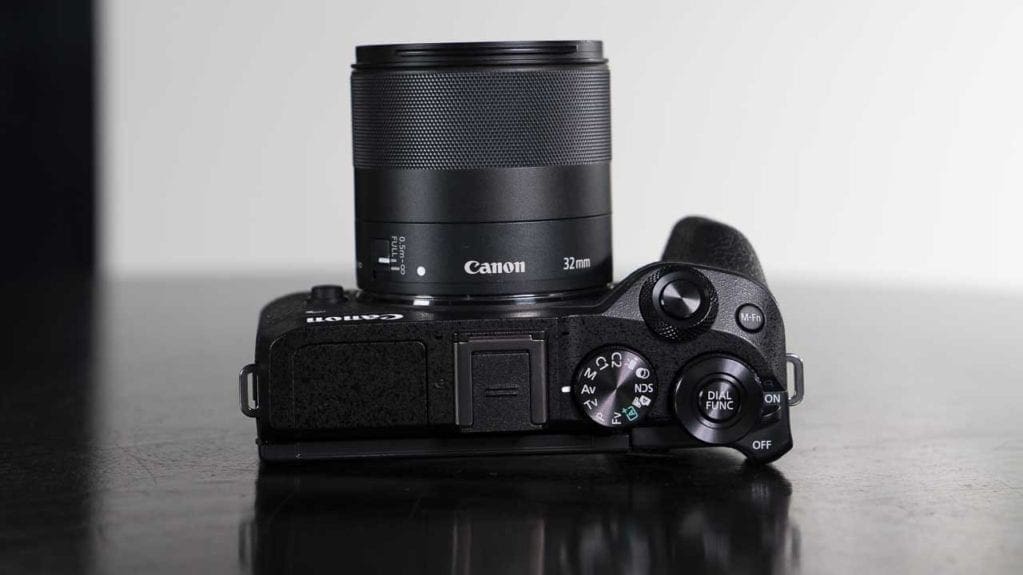
Features
The Canon EOS M6 Mark II is an APS-C format mirrorless camera. It uses the EF-M mount, which is different from the mount used by Canon’s full-frame mirrorless cameras and Canon’s DSLRs.
Like the Canon EOS 90D announced at the same time, the EOS M6 II has a new 32.5Mp Dual Pixel CMOS AF sensor. This is paired with Canon’s Digic 8 processing engine. Together, these enable a fantastic maximum continuous shooting rate of 14fps (frames per second). That rate is possible in single or continuous autofocus mode and can be maintained for up to 54 Jpegs or 23 raw files or 36 CRaw files.
Fast frame rates are often used in conjunction with fast shutter speeds and the M6 II can shoot at 30-1/4,000sec with the mechanical shutter or up to 1/16,000sec with the electronic shutter.
Like in the Canon EOS 90D, that sensor and processor combination enables a standard sensitivity range of ISO 100-25,600 with an expansion setting of ISO 51,200 for stills. In movie mode, the expanded range is ISO 100-25,600.
As the EOS M6 II is a mirrorless camera, it relies on the imaging sensor to supply the information for the autofocus system. Canon has used its Dual Pixel CMOS design for the sensor, which means that the pixels are each made up of two photodiodes. Both of these are read individually for the phase-detection autofocusing. However, they are read together to generate the image signal.
This technology enables the AF point to be set across 88% of the horizontal area of the sensor and 100% of the vertical area. Phase detection focusing is also usually faster than contrast detection.

Video
Even at launch, the original Canon EOS M6 seemed a bit out of step on the video front as it topped-out at Full-HD resolution. Thankfully, Canon has now seen the light in this respect and the EOS M6 Mark II is 4K-enabled. It can shoot MP4 (AVC/H.264) 4K (3840 x 2160) video at 29.97, 25fps. It’s also possible to shoot 4K Time-lapse videos at 29.97, 25fps.
In addition, Full-HD (1920 x 1080) video can be shot at 119.88, 100, 59.94, 50, 29.97 or 25fps. That gives plenty of scope for slow-motion video creation.
Further good news is that there’s no additional crop factor applied to the video so even 4K footage has the same angle of view as stills.
The maximum video length is 29min 59sec while the maximum file size is 4GB.
There’s also a 3.5mm port to connect an external mic. There’s no headphone port though.
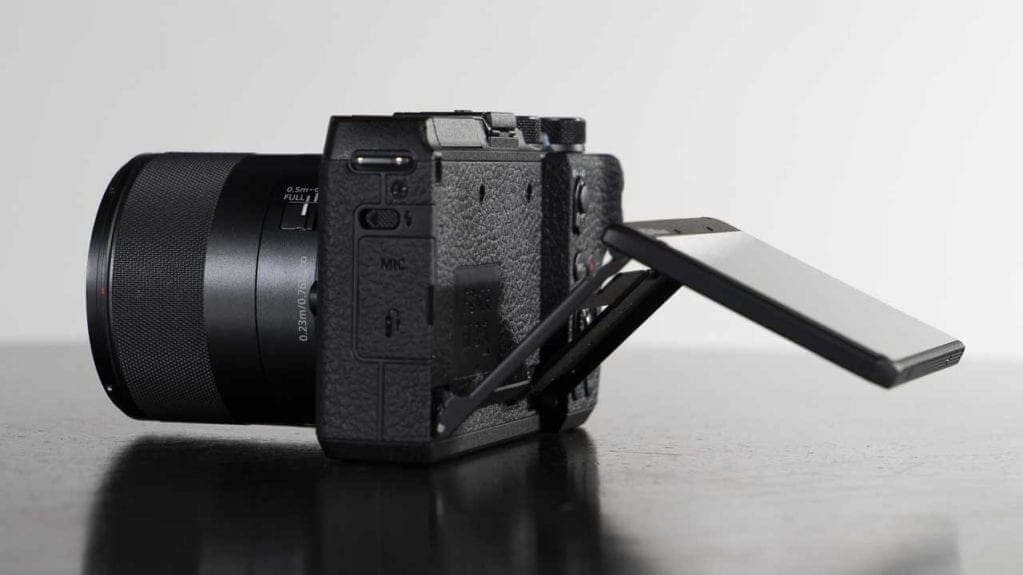
Build and Handling
The Canon EOS M6 Mark II is one of the smaller mirrorless cameras around. In fact, it’s so small it could probably hide amongst some compact cameras. It may not suit all photographers, especially those with large hands, but if you’re looking for a camera for travel or to slip in a small bag, it’s one to consider.
It’s also shaped like a mini SLR and has a well-shaped grip on its front along with a good thumb rest on its rear. A smooth but grippy coating helps keep the camera safe in your hand.
Screen
Canon has stuck with the same 3-inch ClearView II Touchscreen LCD with 1,040,000 dots as is on the original M6. This can be tilted 180 degrees up and 45 degrees down. There are higher-resolution screens around, but a 1,040,000-dot unit is fairly standard at this level.
There’s no viewfinder built-in, but the M6 II is compatible with Canon’s EVF-DFC2. This has a 0.39-inch type display with 2.36-million dots. it makes a great addition to the camera.
Buttons and Dials
The control layout is very similar to the EOS M6’s, but the EOS M6 II makes a few changes. The most obvious of these is the removal of the exposure compensation dial. This is useful for making quick adjustments on the M6. However, like the EOS M5, the M6 Mark II has a dial with a function button at its centre on the top-plate. This provides a quick means of adjusting several key settings, including exposure compensation.
While the dedicated dial brings the benefit of being able to see the exposure compensation value without powering-up the camera, I like the Function button and dial arrangement.
There’s also a dial around the shutter release. This is ideally placed for making setting adjustments.
Like the M6, the M6 II has a mode dial that lets you set the shooting mode quickly. This has automatic options to suit beginners as well as semi-automatic and manual exposure mode for experienced users.
Sadly, Canon hasn’t put a joystick on to the back of the M6 II. That’s a shame as it would be a really easy way to move the AF point around while looking in the optional viewfinder. However, the Touch & Drag AF mode allows you to shift the point around using your thumb or finger on the screen while the camera is held to your eye. That works well, but there are times when a joystick is preferable.

Viewfinder
I find it far easier to follow a moving subject when I’m using a viewfinder rather than a screen on the back of the camera. So I’m pleased that the EOS M6 II is compatible with the EVF-DC2 electronic viewfinder. In fact, in the UK, it’s bundled with the lens kit. That means you can have the best of both worlds, a super-small camera or one with a viewfinder.
The EVF-DC2 provides a good view of the subject with plenty of detail visible. I recommend buying the viewfinder with the M6 Mark II.

Touch Control
In the dark conditions of the go-karting track, the M6 II’s touch control was a major bonus. It means that rather than fumbling about for the right control, you can tap the Quick or main menu buttons to see and adjust any parameter.
Despite the small size of the Canon M6 II, there’s also a reasonable number of buttons and dials available for making setting adjustments if you prefer that method.
Performance
Canon chose a go-kart track for the press launch and as it had no natural light, it was a very challenging environment for any camera. There were a few continuous lights set-up, but it was still very gloomy. I was sceptical that the M6 II’s autofocus (AF) system would cope. But it did. In fact, it didn’t just cope, it did a great job.
The light was so poor that I had to shoot at ISO 6400, 12,800 or 25,600 to use shutter speeds fast enough to freeze the moving go-karts in the brightest areas. However, the camera also focused on the karts in some of the darkest areas and the tracking system kept them sharp as they sped along.
If I selected a specific focus point, the camera usually got it sharp. In Face Detection and Tracking mode, the camera is able to use any of its AF points for focusing. The active points turn green as the subject is detected. It then gets its sharp in an instant. In most situations, it targets the nearest point of contrast for focusing, which was usually the bonnet of the go-kart.
Go-karts move fairly predictably and subjects that move more erratically are a bigger challenge. Nevertheless, the Canon M6 III’s AF system fairs pretty well. It may not be the natural choice for sports photography, but it can deliver.
Canon EOS M6 Mark II Image Quality
The Canon EOS M6 Mark II has the same 32.5Mp sensor as the Canon 90D. This enables it to capture a good level of detail at the lower sensitivity settings. However, if you pixel-peep, you can see noise in raw files shot at ISO 400. This is concealed in the simultaneously captured Jpegs. On the whole, the noise reduction is handled well, but some very fine out of focus details can look to soft. It’s not really bad, but once you see it, you start to notice it more.
I’d aim to avoid using ISO 25,600 if I could, but ISO 12,800 produces respectable results. However, if possible, I’d try to use ISO 6,400 or lower as this results in much better results.
Canon EOS M6 Mark II Colour
In its default settings, the Canon EOS M6 II generally produces nice colours. As a rule, I tend to stick with the Standard or Auto Picture Style, but it’s good to have alternatives like Portrait, Landscape, Fine Detail, Neutral, Faithful and Monochrome on occasions. Alternatively, there are three user settings that let you tailor the appearance of Jpegs to your own preferences.
As usual, the M6 II’s auto white balance setting is a good starting point. However, it’s worth experimenting with the preset options in different lighting conditions. Helpfully, the screen shows an accurate preview of the image, so you can use this to guide your choice. In overcast conditions, the Cloudy setting gives images and video a little lift so they don’t look quite so cool.
If you’re not happy with what the preset white balance or Auto settings produce, it’s easy to set a customer white balance provided you have a neutral target like a piece of neutral-white paper or a grey card.
Canon EOS m6 Mark II Dynamic Range
The Canon M6 II’s dynamic range is a bit limited. As a result, I recommend keeping any post-capture brightening to under 3Ev. Even then, you’re likely to see more noise in the shadows. And only work with raw files because if you brighten the shadows of Jpegs, the out of focus areas may lack detail.
In practice, when you’re shooting landscapes, you can underexpose by a stop or two if you need to protect the highlights and still successfully brighten the shadows.
Sample Video
I shot this 4K video on the Canon EOS M6 Mark II in manual exposure mode, with the white balance set to Cloudy and the Picture Style to Auto. The audio was recorded using the internal mic.
Sample Images
Follow the link to browse and download full-resolution images
The images below were shot at ISO 12,800.
- ISO 12,800
- ISO 12,800
- ISO 12,800
- ISO 12,800
- ISO 12,800
- ISO 12,800
- ISO 12,800
Verdict
While Canon’s M-series cameras have always had good sensors and been able to deliver high-quality images, the AF systems in the first few were hopelessly slow. Thankfully, Canon has made great strides in this area. In fact, and the EOS M6 Mark II has a very impressive AF system.
The image quality from the M6 II is also generally very good. However, there’s a slight niggle about the amount of noise (and the impact of its removal) at sensitivity settings as low as ISO 400. I may not be an issue in many situations, but it’s something to watch out for. It’s especially important to be aware if you need to brighten the shadows.
Canon has done a nice job with the EOS M6 Mark II’s build and handling. I’m sure there are some that will find it too fiddly, but I think it’s a great size and the grip feels very nice in your hand. The flip-up screen may not be quite as useful as a vari-angle unit, but it’s fine for most selfies and for vlogging. Nevertheless, I would purchase the optional EVF-DC2 electronic viewfinder as it means you don’t need to worry about reflections. It also allows you to concentrate on the subject more.
It’s clear that Canon has turned a corner with the EOS M cameras, but it needs to take the lens line-up more seriously. There needs to be a greater range of lenses with some high-end fast glass.

